- Register
- Log in to Tune-In
- Wishlist (0)
-
Shopping cart
(0)
You have no items in your shopping cart.
Beatles News

The Beatles hold several accolades that prove they are the most commercially and culturally successful band of all time. Between their 20 No. 1 hits on the Billboard Hot 100, eight Grammy Awards, and insurmountable cultural influence, The Beatles’ success truly cannot be defined.
However, in regards to numbers, a few songs are certainly more successful than others. And today, we are going to try to define the robust success of three of The Beatles’ biggest hits. That being so, here are three of The Beatles’ most successful No. 1 hits of all time.
“She Loves You”
In addition to peaking at No. 1 on the Billboard Hot 100, The Beatles’ single, “She Loves You” became the best-selling UK single of the ’60s. As of 2022, the song became the ninth best-selling single in the history of the UK.
Beyond numbers, “She Love You” was the song that arguably garnered The Beatles both the spotlight and platform they needed to become an international sensation. Following the song’s 1963 release, The Beatles acquired mass notoriety and made their first US appearance a year later in 1964.
“Yesterday”
“ details

Fans of The Beatles are saying their White Album release has a “slightly creepy” feeling throughout.
The sinister suggestions were shared by longtime listeners, who took to r/beatles on Reddit and shared their thoughts on the off feeling found on the album. One user asked: “Does the White Album give anyone else a slightly creepy and offputting feeling?” Several said the album does give off a sinister feeling, with one user suggesting it provides the album some crucial context. They wrote: “Absolutely. There are so many moods on the album that they all amplify each other, and the creepy songs make the happy and whimsical ones feel unsettling in the context of the whole album.
“A song like Ob-La-Di, Ob-La-Da or Martha My Dear is not at all sinister in isolation, but put them on the same album as Helter Skelter and Revolution #9, and they start to feel a bit haunted. The overall effect is an album that seems like a funhouse fever dream where you can sort of grasp the overall shape but it never comes fully into focus. I think it’s the greatest album ever made.”
Another agreed, adding: “You got it exactly right with your comment about Martha My Dear. It&rs details
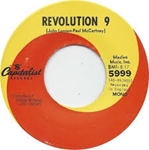
As of this writing, the Beatles’ “Revolution 9″ has more than 13,800,000 plays on Spotify. This has no doubt generated decent revenue, even given the platform’s oft-lamented payout rates. But compare that number to the more than half-a-billion streams of “Blackbird,” also on the Beatles’ self-titled 1968 “white album,” and you get an idea of “Revolution 9”’s place in the band’s oeuvre. Simply put, even ultra-hard-core Fab Four fans tend to skip it. Regardless, as Ian MacDonald writes in Revolution in the Head: The Beatles’ Records and the Sixties, “this eight-minute exercise in aural free association is the world’s most widely distributed avant-garde artifact.”
Masterminded by John Lennon, “Revolution 9” is not exactly a song, but rather an elaborate “sound collage,” assembled in broad adherence to an aesth details

Abbey Road reenters the Billboard 200, Top Rock & Alternative Albums, and Top Album Sales charts, ... [+] nearing 500 total weeks on the Billboard 200. HAMBURG, GERMANY - MAY 28: A general view of the 'Abbey Road Studio' room is seen at the Beatlemania exhibition on May 28, 2009 in Hamburg, Germany. The exhibition, which opens tomorrow, shows the development of the Beatles from their beginnings in Hamburg until they split up.
The Beatles are still so popular to this day that the group almost always appears on one Billboard chart or another. The band usually trades one title for a different one, based on both changing interests among American listeners as well as a handful of rules specific to the Billboard tallies that dictate which project finds space on a ranking (or doesn’t).
Most of the time, The Beatles appear with one compilation or another. It’s not uncommon for legacy acts to see just one or two collections of hit singles appear on the Billboard charts, as those are the titles that fans flock to both when they want to buy something from a favored act and when they head to streaming platforms.
This week is a bit different for The Beatles. Instead of a compilation, like eithe details

The Beatles icon Paul McCartney has revealed the one song that never fails to make him "break down in tears".
Despite penning classics such as Hey Jude, Band on the Run, and Get Back, it's a tune from one of his 1960s rivals that moves him to tears every time he hears it. The Beatles' star labelled the song as one of his all-time favourites, recounting an instance when he broke down in front of the original songwriter during a rehearsal of the track.
McCartney's fans have been left debating the collaborative effort, expressing their wish for more than just a handful of rare performances. A thread on Reddit saw listeners reminiscing about a 2002 rendition of the song. One user questioned why McCartney and The Beach Boys' Brian Wilson hadn't collaborated in the studio, with many pointing to a poignant moment which brought Sir Paul to tears.
One fan queried: "I've always found it perplexing who McCartney chooses to collaborate with. Very few were of this calibre but I wonder why he's never cowrote anything with Brian Wilson. Any thoughts?"
Another responded: "Although not a writing collaboration, Paul has spent time in the studio with Brian. He allegedly has an uncredited performance on the ce details

In 1988 George Harrison was in Hana on the island of Maui in Hawaii with his family where he had a vacation property. At the time, Harrison was also there to shoot a video for the song “This Is Love” from his 1987 album Cloud Nine.
While walking with his son Dhani one day, the two came across a sign near the beach that read: “If the wind blows, you can always adjust your sails, but, if you don’t know where you’re going, then any road will take you there.”
The words would become the base of a new song, “Any Road,” which Harrison started writing shortly after seeing that sign. Harrison held the song close until it had its place and later recorded it on and off between July 1999 and October 2001 for his 12th and final album Brainwashed.
Harrison’s lyrics follow the Eastern philosophy he followed for most of his life, of continuing forward no matter how difficult the path, or moving toward a higher state of being as in Hindu.
“The past, the present, and the future is just one cycle,” said Harrison in a video around Brainwashed. “I believe as most Buddhists and Hindus believe that it’s us coming back.”
For I&rs details

Paul McCartney’s next book, coming out this fall, is a reminder that the Beatles were not his only band
"Wings: The Story of a Band on the Run" is an oral history about the group McCartney formed in the early 1970s, after the Beatles broke up. With members including guitarist Denny Laine and McCartney's then-wife, keyboardist Linda McCartney, Wings rose from driving to shows in a van to selling millions of records with such hits as “Band on the Run,” “Jet,” “My Love” and “Silly Love Songs.” The band broke up in 1981.
Edited by historian Ted Widmer, the illustrated, 528-page book draws in part on hours of interviews with McCartney. W.W. Norton & Company, which also published McCartney's “The Lyrics” and “1964: Eyes of the Storm,” announced Wednesday that “Wings” will be released Nov. 4.
“I’m so very happy to be transported back to the time that was Wings and relive some of our madcap adventures through this book," McCartney, 82, said in a statement. "Starting from scratch after The Beatles felt crazy at times. There were some very difficult moments and I often questioned my decision. But as we got bet details
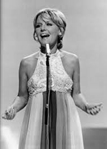
Petula Clark was heckled by her own audience — and then John Lennon gave her some obscene advice. She became part of one of John's most significant solo songs.
Petula Clark was heckled by her own audience — and then John Lennon gave her some obscene advice. By accident, the experience helped her become part of one of John’s most significant solo songs. Sometimes, life comes at you fast!
Why John Lennon swore at Petula Clark to make her feel better
Clark is sometimes known as the First Lady of the British Invasion. Why? Well, of the few female singers who were part of that scene, she was the most successful. Several of Clark’s songs became hits in the United States, such as “Don’t Sleep in the Subway,” “My Love,” “This Is My Song,” “I Know a Place,” and, most famously, “Downtown.”
During a 2013 interview with The Guardian, Clark said she once performed in Montreal and sang songs in English and French — the two official languages of Canada. English speakers were upset that she sang in French and vice versa. During that performance, Clark was jeered. Clark then spoke with a rock ‘n’ roll legend w details

What more can you write about the late George Harrison, who would've turned 82 on February 25?
People have been writing about the Beatles – pretty much nonstop – since 1963, when Peter Lorre, Andrés Segovia, John Coltrane, Stan Laurel and Bud Abbott still walked the earth.
Well, to answer my own question, it might actually be a story like our April 2025 cover feature – a story where all of Harrison’s albums (including everything by the Beatles) are laid out, side by side, in chronological order, along with some of his most important side trips and guest appearances, making it all seem like one huge body of work, which – guess what! – it is.
It’s a feature in which – for better or worse – oddities like Wonderwall Music, Encouraging Words and Is This What You Want? are given the same space and word count as major players like Abbey Road, Revolver and All Things Must Pass.
But perhaps the cherry on top is our new interview with George’s son, Dhani Harrison – he of thenewno2, Fistful of Mercy and solo fame – who sheds some light on another major player in George Land, 1973's Living in the Material World, home of some of th details
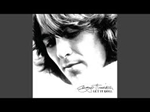
“My Sweet Lord” was Harrison’s first single as a solo artist, and it was a chart-topping hit across the globe. But the song wasn’t your typical pop chart fodder. Rather, “My Sweet Lord” is a folk rock gospel song heavily inspired by Harrison’s spiritual awakening.
In 1967, George Harrison and the rest of The Beatles traveled to Rishikesh, India. At the time, Harrison was in a pretty relatable but unpleasant spot. He was struggling with his identity as a musician as well as his purpose in life outside of being part of the Fab Four. A bit of spiritual guidance was all he really needed to go down a new path in life, helped in part by the teachings of Maharishi Mahesh Yogi.
The Spiritual Experience That Inspired “My Sweet Lord” by George Harrison
Much of the music Harrison wrote during and after that famed trek to India reflects a sort of enlightenment about his life. Plenty of people, including fans and those close to Harrison, saw it as just a phase. However, the inspiration that Harrison took back with him from India influenced him until the very end of his life. “My Sweet Lord” could be seen as a defining song of that life-changing experience details
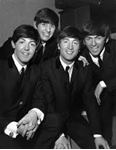
The Beatles are back on the music charts in the United Kingdom, where all four musicians, including those no longer with us, remain legends. The group never stays away for very long, and even when one album or hit song disappears for a short time, it either quickly returns, or is replaced by another popular release from the rockers.
1, a collection of the Beatles’ biggest smashes that was released more than two decades ago, now stands as the group's only charting album. The compilation reappears on a pair of rankings across the pond as it's become a huge win once more.
This frame, 1 launches highest on the Official Albums Streaming chart. On that tally, it lands smack dab in the middle, at No. 50.
The same title manages to once again appear on the Official Albums chart, the ranking of the most-consumed projects throughout the nation. 1 re-enters that competitive list at No. 64.
While 1 may sit lower on the main albums roster than on the streaming-only chart, it has actually performed better on the former. The Beatles’ singles-packed collection hit No. 1 without issue on the Official Albums list, and it has now racked up 467 stays somewhere on that ranking. The same release stalled at details

'In My Life' is not just one of The Beatles greatest songs, but one of THE greatest songs.
The Beatles released over 200 songs during their decade odd at the top of the pop world, and you could make a fair argument for any one of 50 odd to be their very best. In our own rankings, we put 'In My Life' in at number one, and we're not the first or the last. Back in 2000, Mojo magazine went even further, arguing that it was simply the best song of all time ever.
But do you know who wrote 'In My Life', or what year it finally made the charts (and where it placed when it got there)?
Do you know who the "dead" and "living" friends are being referred to in the lyrics, or what instrument George Martin plays on the song?
Who wrote 'In My Life'? This one should be easy, right? Not a cover, not one of George Harrison's 22 Beatles songs, not a quirky full-band co-write of one of Ringo Starr's pair of oddities.
So it's by John Lennon and Paul McCartney. Yes, indeed, we've got the immortal Lennon-McCartney on the label.
But that's never the whole story.
Source: goldradio.com/Mayer Nissim

Good poetry often requires multiple readings to reveal its true message—a literary lesson that John Lennon learned the hard way after writing “I Am the Walrus.” The former Beatle wrote the Magical Mystery Tour track over several weeks, pulling inspiration from an appropriately eccentric list of resources, including LSD, Shakespearian BBC broadcasts, and plenty of social commentary. “I was writing obscurely, á la Dylan, those days,” Lennon later said of his distinctly odd composition in a 1980 Playboy interview.
But as it turns out, Lewis Carroll, one of Lennon’s literary inspirations, was also a fan of writing obscurely. Consequently, Lennon ended up basing “I Am the Walrus” on the wrong character in “The Walrus and the Carpenter.”
John Lennon Later Realized His Mistake On “I Am The Walrus”
Years before John Lennon would write one of the Beatles’ most psychedelic tracks, the musician dabbled in prose writing with his 1964 book, In His Own Write. Lennon and critics alike attributed his nonsensical dialect a details
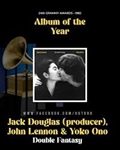
John Lennon and Yoko Ono won album of the year at the 24th annual Grammy Awards, held in Los Angeles. The pair won the award for Double Fantasy, the final album Lennon recorded before his death in December 1980.
The Police took home two awards that evening, best rock vocal performance by a duo or group for “Don’t Stand So Close to Me” and best rock instrumental for “Behind the Camera.”
Other winners included Pat Benatar, for best female rock vocal performance for “Fire and Ice,” Rick Springfield, for best male rock vocal performance for “Jesse’s Girl” and the track “Bette Davis Eyes,” by Kim Carnes, which took home both song and record of the year.
Source: everettpost.com/ABC News
details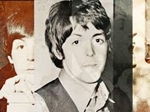
Sir Paul McCartney has revealed his favourite song and it’s one that many will be familiar with - but not one from The Beatles.
The song is a well known tune from the 1930s sung by Fred Astaire. In an interview, McCartney said: “One of my favourite songs because of its structure is Cheek To Cheek.” Penned by American songwriter Irving Berlin, the peppy melody has maintained its reputation over the years.
McCartney said on the podcast McCartney: A Life In Lyrics how the tune inspired the hit song Here, There and Everywhere. He said: “I liked it very much before it starts off, 'Heaven, I'm in heaven… then the middle eight, 'Will carry me through to… heaven…' It's just like, yes!
"The way it just resolves up its own tail I always found wonderful. And I think somebody said I do it in this.” During the 1960s, McCartney evolved rapidly as a songwriter - he was just 24-years-old when Revolver was released.
Talking about Here, There and Everywhere, McCartney adds: “I like the fact that we think that we're on a path on the Moors, and we think we're going for a walk and then suddenly we've arrived where we've started.
details